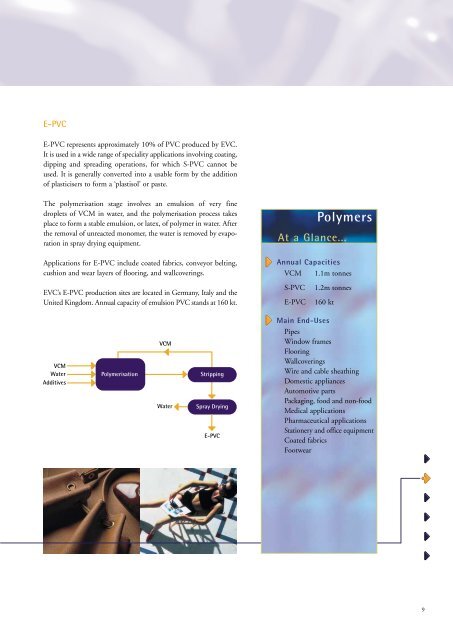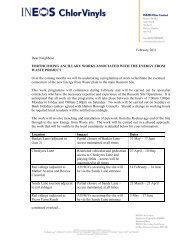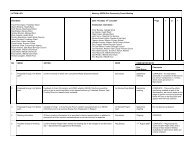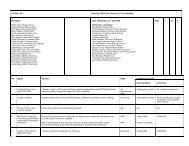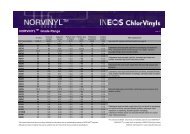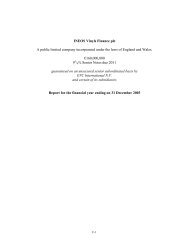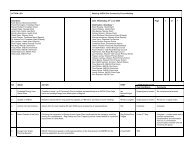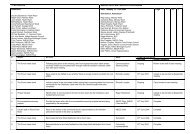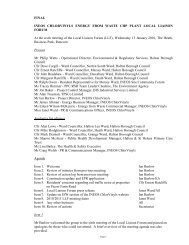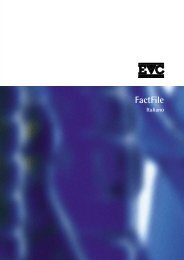Polymers - INEOS Chlor
Polymers - INEOS Chlor
Polymers - INEOS Chlor
You also want an ePaper? Increase the reach of your titles
YUMPU automatically turns print PDFs into web optimized ePapers that Google loves.
E-PVC<br />
E-PVC represents approximately 10% of PVC produced by EVC.<br />
It is used in a wide range of speciality applications involving coating,<br />
dipping and spreading operations, for which S-PVC cannot be<br />
used. It is generally converted into a usable form by the addition<br />
of plasticisers to form a ‘plastisol’ or paste.<br />
The polymerisation stage involves an emulsion of very fine<br />
droplets of VCM in water, and the polymerisation process takes<br />
place to form a stable emulsion, or latex, of polymer in water. After<br />
the removal of unreacted monomer, the water is removed by evaporation<br />
in spray drying equipment.<br />
Applications for E-PVC include coated fabrics, conveyor belting,<br />
cushion and wear layers of flooring, and wallcoverings.<br />
EVC’s E-PVC production sites are located in Germany, Italy and the<br />
United Kingdom. Annual capacity of emulsion PVC stands at 160 kt.<br />
VCM<br />
VCM<br />
Water<br />
Additives<br />
Polymerisation<br />
Stripping<br />
Water<br />
Spray Drying<br />
E-PVC<br />
<strong>Polymers</strong><br />
At a Glance...<br />
Annual Capacities<br />
VCM 1.1m tonnes<br />
S-PVC 1.2m tonnes<br />
E-PVC 160 kt<br />
Main End-Uses<br />
Pipes<br />
Window frames<br />
Flooring<br />
Wallcoverings<br />
Wire and cable sheathing<br />
Domestic appliances<br />
Automotive parts<br />
Packaging, food and non-food<br />
Medical applications<br />
Pharmaceutical applications<br />
Stationery and office equipment<br />
Coated fabrics<br />
Footwear<br />
9


